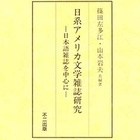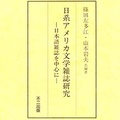>>その1
2.鶴嶺湖男女青年団の結成
隔離収容所となった1943年の秋ころから、青年団を作ろうという動きが起こったが、それが本格化したのは、さきに述べた「現状維持派」と「現状打破派」の対立が深刻になった時期であった。これら二派の対立は、市民権の蹂躙への抗議や、合衆国に忠誠か不忠誠かといった日系人の思想の根本的な問題から生まれたものではなかった。良識のある人びとの目にはその対立は単なる醜い勢力争いとしか写らなかった。自分たちがそのようは無益な対立に巻き込まれ、次第に生きる指針を見失って行くのは耐えられないと考えた若者たちは、止むに止まれぬ気持ちから青年団の結成を決意した。青年たちは二派の対立の中で暴力がまかり通って、正常な判断が失われていく事態に危機を感じていた。考え深い人びとが沈黙してしまうような状況を変え、収容所生活を意義あるものにしたいというのが、多くの若者に共通した気持ちであった。
1944年3月12日、中央劇場で鶴嶺湖男女青年団の発団式が行われた。「鶴嶺湖」とは、当時多く使われていた片仮名表記「ツールレーキ」に詩的な漢字を当てはめたもので、新聞などにもこの字が使われている。団長は、かつてヒラリヴァー収容所で「比良男女青年会」を組織していた帰米二世丸山郁雄であった。彼はその経験を評価されて、ふたたび団長に選ばれたのである。団員は大部分が帰米二世であったが、親に従って日本送還を希望した純二世も含まれていた。
青年団は会費を徴収せず、演芸会、日本映画の上映会、絵画や工芸品の展示即売会などを催して入場料を集め、その利益を会の運営費に当てた。そしてこのような有料の催し物を頻繁に開いたため、「金儲け青年団」というニックネームをつけられたという。しかし娯楽の乏しい収容所では映画や大衆演劇の上演は大人気で、切符はたちまち売り切れてしまい、かなり利益が得られた。青年団はこれを資金として活発な活動を行うと同時に、紙を購入して機関誌の発行を計画した。
3. 機関誌『怒濤』の創刊とその目的
1944年7月、隔離収容所となってからちょうど一年目に『怒濤』が創刊された。青年団が組織されてすでに4ヶ月がたっていた。機関誌発行は結団当初から計画されていたようだが、監理当局から発行許可を得てまとまった量の紙を確保することが難しかったと思われる。雑誌は謄写版刷りで約500部作られ、団員に無料で配布された。
編集を担当したのは帰米二世の藤田晃と橋本京詩(本名は清)である。二人は幼い時に日本へ送られ、東京の大学または大学予科で学んだという共通点があった。藤田の父は静岡県清水市三保の出身で、カリフォルニア州インペリアル平原で農業を営んでいた。晃は1920年にブローレー市で生まれ、2歳のときに祖父母のもとに送られて養育された。成人するまで日本で過ごし、早稲田大学を中退して帰米し、ロサンゼルスで暮らしていた。彼はポストン収容所を経て、トゥーリレイクへ送られて来た。彼は団長の丸山と中学の同級生であったため、青年団の機関誌を担当してほしいと頼まれた。
一方の橋本はロサンゼルス生まれで、3歳のときから父の郷里福井県で育てられた。地元の中学を終えると東京へ出て、立教大学の予科で学んだ。その後日米開戦の直前に最後のアメリカ行きの船となった竜田丸で帰米した。彼はマンザナー収容所を経てトゥーリレイクへ来ていた。二人は年齢が同じで幼いときから成人するまで日本で暮らしたという経歴も一致していた。その上、二人とも文学青年であった。意気投合した二人は、身軽な独身青年である利点を生かして機関誌の仕事に専念した。
* 篠田左多江・山本岩夫共編著 『日系アメリカ文学雑誌研究ー日本語雑誌を中心にー』 (不二出版、1998年)からの転載。
© 1998 Fuji Shippan





